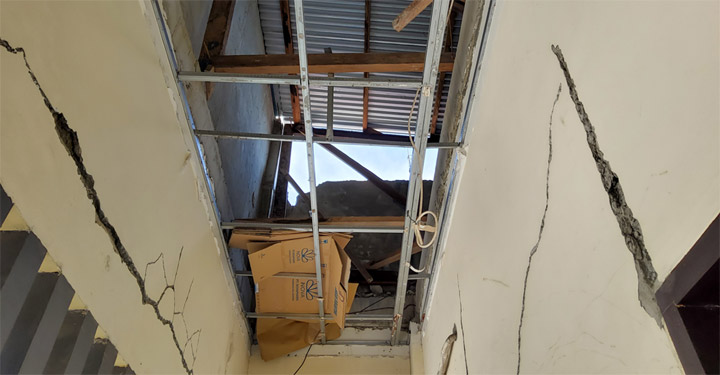Types of Cracks Due to Earthquake

Earthquakes can be fatal to humans. For example, the Alaska earthquake on March 24, 1964, was the third most severe in the world on record. And only a small population of the region saved America from impressive losses. But even now it is worth knowing the types of cracks due to earthquakes to understand the seriousness of the situation and be able to correctly assess the damage from an earthquake to your home.
First of all, let's find out how earthquakes are classified.
Classification of Earthquakes in the World
Since ancient times, when from ancient times when instrumental methods for observing earthquakes were not yet used, their traces left on the surface of the earth were compared, in fact, there was a lot of subjectiveness in this comparison. The strength of the propagation of earthquakes depends on the distance of the epicenter of the earthquakes.
In the 19th century, there was an attempt to classify earthquakes according to their effect on human life, on the environment, and on the landscape of the earth. At the end of this century, a scale was widely used in Italy and Switzerland, which divides the vibration of earthquakes according to their intensity on a ten-point scale. In 1902, in Italy, Giuseppe Mercalli compiled an intensity scale on a 12-point scale. It is it that is used today to assess the destructiveness of earthquakes. And at the same time, it helps to determine the types of cracks due to earthquakes.
- A 1-point earthquake is hardly felt by a person.
- 2 earthquake points are felt with difficulty. Vibration is felt only by people on the upper floors and at rest, and even then not always.
- 3 points can cause slight fluctuations. In the house, especially sensitive people can feel it; on the street, many can notice vibrations. In general, such vibrations resemble the vibration of the earth from the impact of a conventional car. Meteosensitive people may notice a deterioration in well-being and feel hesitation, looking at minor movements of objects, if at the time of an earthquake a person is on the upper floors of a building.
- 4 points are already noticeable tremors. They are definitely felt by most people on the upper floors and by some people on the lower floors.
- 5 points are felt by most people inside buildings, and by some people from outside, It can wake a person up, cause unpleasant sensations, and pets with such a force of shocks often panic. Such an earthquake can cause significant damage to furniture and household utensils, cause chandeliers to fall, fragile dishes in cupboards, and furniture moving across the floor.
- It is simply impossible not to notice 6 points both inside the building and on the street. And with such an earthquake, damage affects not only the interior but also the supporting structures of buildings.
- 7 points can lead to the collapse of buildings. And the vibration of the soil is felt not only at rest but also while driving, for example, if you are driving on the motorway in your car. This is already a catastrophic level of earthquakes.
- 8-9 points is the critical level at which irreversible destruction begins. Under such tremors, not only private houses, buildings or structures are destroyed, but even such objects as cemetery monuments and monuments.
- 10-12 points is a true disaster when there is no longer any talk of cracks and destruction. With such a degree of destructiveness, the landscape of the area simply changes. Remember the blockbuster San Andreas Rift? This is exactly about such earthquakes.
How to Classify Types of Cracks Due to Earthquake
Let's start with the minimum scores. If we are talking about shocks of 1-4 points, then the maximum that awaits you is a crack in your favorite glass if you left it on the edge of the table and was accidentally thrown to the floor by an earthquake. In this case, 99% of all buildings remain intact and intact.
But from 5 points, damage begins to be more significant. For example, with sudden shocks and changes in temperature inside and outside the building, window and door panes may crack. This is also quite normal, and often does not require the intervention of rescue services. For private houses of the old building, cracks in the plaster and shedding of the plaster are quite real.
At 6 points, heavy furniture can already move and cracks can form in it. Sometimes cracks can appear in the walls of panel houses and buildings made of reinforced concrete blocks. The inner walls of houses made of raw bricks or clay blocks also suffer from cracks.
And with 7 points, the types of cracks due to earthquakes can be very different. This level of earthquakes is already catastrophic because cracks can affect load-bearing walls and floors.
From 8 points and above, it is no longer just about cracks. With such a force of tremors, buildings can completely collapse. Therefore, in such earthquakes, it is imperative that residents be evacuated to a safe place or shelter in the basement.
Knowing the types of cracks due to earthquakes is useful not only for safety. In the future, this information may also be useful to you to apply to the insurance company.
